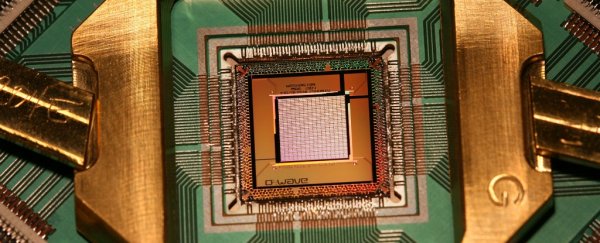For decades, scientists have been talking about quantum computers – a new generation of computers that would be exponentially more powerful than today's best supercomputers, and would revolutionise the way we process data.
But despite regular headlines on new advances in the field, it feels like we're still so far away from seeing a true, working version.
That's why researchers have just published a paper describing a 'roadmap' of what needs to be done to build the first practical quantum computer.
The study, led by scientists at the University of Technology Sydney (UTS) in Australia, in collaboration with MIT, looked specifically at research on photon-based quantum computer chips, which use particles of light to code for information, and are a frontrunner for getting quantum computers off the ground.
But let's start with the basics. A regular computer solves problems using bits that can be either a 0 or a 1 – meaning it can process only one thing at a time.
Quantum computers, on the other hand, use quantum bits (or qubits), which can be 0, 1, or in a superposition of both at the same time - think Schrodinger's cat and being dead and alive in a box all at once.
This means that instead of being able to solve just one problem at a time, a quantum computer could theoretically solve many calculations at once.
Google has already created what it calls a quantum computer, but many experts say it's not anywhere near as powerful as a 'real' quantum computer would be, because it only enacts a special type of quantum computing called quantum annealing.
So what's standing in our way of building a proper quantum computer?
While scientists have managed to capture and hold onto particles that are small enough to be qubits – and they've successfully demonstrated entanglement of multiple photons – they're still struggling to make these devices practical.
Nevertheless, photon-based quantum computers are a solid bet, because not only can particles of light work as qubits, they can also transport the information afterwards, creating the foundation of a functioning computer system.
Plus light travels fast and emitters can be efficiently packaged onto a small chip – just think of laser beams and laser pointers.
"Photonic technologies are becoming increasingly prevalent in our daily lives. After decades of rapid advances, light sources – especially lasers and light-emitting diodes (LEDs) – have become high-performance, yet low-cost and reliable components, driving the internet and lighting cities," the team from UTS writes.
According to this new paper, the next step is the development of a perfect solid state non-classical light source, known as a single photon source.
These sources of light produce streams of photons with controllable quantum relationships and act as qubits. They should emit identical photons, in terms of intensity and colour, and be triggered electrically.
Plus researchers need to find and engineer the perfect material for the job. Among the many contenders are diamond and an emerging platform, identified by the researchers, called hexagonal boron nitride.
"There is still no 'ideal' on-demand single-photon emitter, but a plethora of promising material systems have been developed, and several have transitioned from proof-of-concept to engineering efforts with steadily improving performance," the researchers write.
In the new paper, the team summarises some of the requirements for these future single-photon emitters. Here are the highlights:
- The team says that the emitters must be bright, easy to engineer, and scalable. The improvement we've already seen in the past few years is equivalent to the six-decade transformation of television – from cathode ray tube to brand new LED flat screens.
- Many groups are pursuing this in different ways – studying different platforms and methods of engineering and characterisation to create the best emitters for the job.
- New platforms are emerging, including quantum dots, diamond and carbon nanotube-based platforms, and 2D materials.
It's exciting to know that we're so close to a real quantum computer, we now have a roadmap to get there. We're looking forward to seeing what happens next.
The review has been published in Nature Photonics.
UTS Science is a sponsor of ScienceAlert. Find out more about their research.
